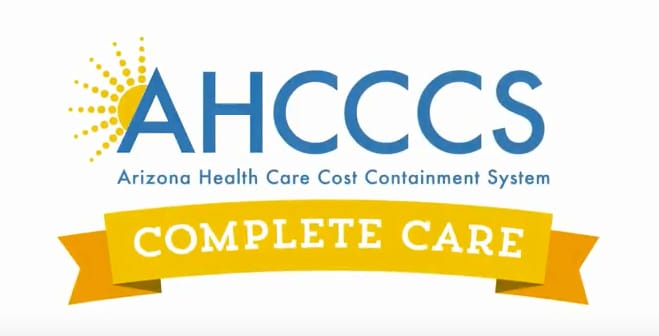Earlier this month we were all facing a predicament.
Arizona’s RBHA became the Arizona Health Care Cost Containment System (AHCCCS) Complete Care Program, which was scheduled to go live on October 1st.
However, for five grueling days after the new program was active, some healthcare providers were still lacking the information they needed to code and bill for services correctly under the new regulations.
Thankfully, those fee schedules were distributed to healthcare providers by October 5th and organizations were able to begin playing the frenzied game of catch-up to get their billing and claims in order.
Now we are facing a new challenge: healthcare plans have not yet released information on reporting and clinical quality outcome measurements.
Here is what that means for your healthcare organization and what you can do to plan for the release of this critical information.
Article Highlights
-
AHCCCS updates to Regional Behavioral Health Authorities (RBHAs) are reshaping how care is delivered, coordinated, and reimbursed in Arizona.
-
Organizations must understand changes to covered services, billing processes, and network expectations to remain compliant and financially stable.
-
The shift impacts behavioral health providers, community clinics, and integrated care settings, requiring updated workflows and training.
-
Effective adaptation starts with communication, both internally with staff and externally with payers and partners.
-
Preparation, flexibility, and strategic support are key to thriving through these regulatory changes.
A New Challenge
Yes, we all now have the fee schedules, contract timelines, and rates we need to run a proper billing and claims department.
Thank goodness.
Now our attention must shift to the next piece of the puzzle: metrics and reporting.
The goal of our healthcare system is always improvement. Health plans want to see that a healthcare provider is helping patients live healthier, incident-free lives.
However, there are a million ways to measure a patient’s health – and we still do not know which of those variables we need to pay special attention to and report.
Will healthcare plans prioritize a reduction in Type II diabetes? Will heart health be the big ticket item this year? Or will we be switching to a focus on reducing obesity and helping patients maintain healthy body compositions?
Unfortunately, we still do not know which clinical quality outcomes health plans will require to be tracked and reported. Until then, there are a few things we can do to get ourselves aligned and ready to receive that information once it comes.
Your Top Priority
First, our top priority must be billing. We may not know what the desired outcomes and key metrics are for reporting, but we can now bill for services.
If your healthcare organization is still in catch-up mode, not to worry. You are not alone. The delay in receiving health plan fee schedules still has many organizations scrambling to update their systems.
However, getting your fee schedules updated and current with the new AHCCCS program should be your top priority so you can file timely claims.
Your organization’s claims could be denied if you do not have your fee schedules imported properly.
Reporting, on the other hand, has leeway that billing and claims do not. Once your billing is sorted out, the next priority becomes strategizing for the receipt of your health plans’ clinical health outcomes and reporting requirements.
Your Next Strategy
We know that improvement is the goal. We also know that you and your team give patients your very best every day to help them live healthier lives. But how do we prove – or even measure – that we are affecting and improving desired health outcomes?
There is a two-pronged strategy I recommend to our clients at John Lynch & Associates.
First, focus on the feds. Whatever the federal government deems important, the individual states must consider as well.
The feds use readmission rates to hospitals to measure the health of the healthcare industry (no pun intended). Consider what your organization can do to prevent readmission rates.
For example, if your department focuses on surgical procedures, what healthcare measures would you prioritize in order to ensure a patient heals fully and is at lower risk of being readmitted post-surgery due to complications?
Similarly, if your organization specializes in oncology, what are the desired clinical outcomes specific to your patient population and how can you minimize hospital readmission or complications from treatment? Second, use other states with similar reporting guidelines as a compass.
New York, for instance, has a healthcare system that is the most similar to Arizona’s. Take a look at New York’s Delivery System Reform Incentive Payment (DSRIP) Program measurements and reporting guide.
By familiarizing yourself with a similar healthcare system, we can make educated guesses as to what AHCCCS will require Arizona’s healthcare organizations to measure and report.
Then use those educated predictions to inform your charting and reporting until the actual guidelines are made available. It is likely that you will have a vast majority of the desired metrics correct and you will have far fewer adjustments and corrections to make to get your reports in order.
How to Prepare for the Unknown
As I mentioned earlier this month, you are not without options in this confusing situation. There are steps you can take to prepare for the day when the information you have been waiting for arrives.
- Form a team – what we like to call an “Action Committee” – of members from various departments to spearhead the implementation process once you do get the information.
- Outline the steps you will need to take as soon as you have the information in hand. Each member of your action committee should know exactly what his or her responsibilities are and how he or she will lead each respective department to success.
- Plan for how you will test your reporting systems to ensure you can generate accurate reports and troubleshoot any issues to minimize downtime.
Conclusion
Ready to Talk?
Related Articles

Ambulatory Care Trends to Watch

Compliance Risk in Healthcare: 7 Emerging Threats Organizations Must Prepare For


